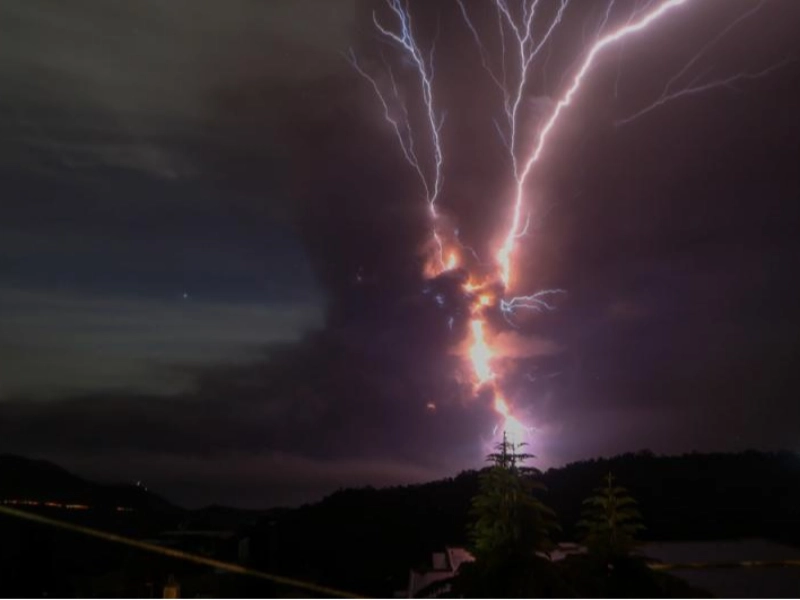Volcanic Lightning: Nature's Electrifying Spectacle
Advertisement
2. The Science Behind Volcanic Lightning

Advertisement
We must explore the intricate interaction of physics and geology occurring during a volcanic eruption if we are to grasp volcanic lightning. Fundamentally, the same ideas that produce lightning in thunderstorms—separation and collision of charged particles—generate volcanic lightning. But the special circumstances within a volcanic plume provide the ideal setting for this electrical phenomena, which results in some of the most amazing shows of natural power on Earth.
An erupting volcano sends a mixture of hot gases, ash, and rock fragments skyward. Tephra, this expelled debris, ranges in size from tiny ash particles to big boulders. These forcefully hurled particles collide with one another and with the surrounding air molecules as they fly. These interactions separate electric charges; smaller particles usually get negatively charged while larger particles pick up a positive charge. The basic mechanism behind the creation of volcanic lightning is this process sometimes referred to as triboelectrification.
Further improving this charge separation is the turbulent character of the eruption column. The rising and spreading plume generates zones with different particle density and temperature. This causes separate areas with varying electrical charges within the plume to develop. We observe what we know as volcanic lightning when the charge difference between these areas reaches sufficiently great causes an electrical discharge. Water vapour in the eruption column adds still another level of complexity to the process. Significant amounts of steam produced by many volcanic eruptions can condense and freeze when it rises into the colder upper atmosphere. Like in a standard thunderstorm, these ice particles can also help to separate charge.
Furthermore, the strong heat of the eruption could ionise the surrounding air, which increases its conductivity and helps the electrical current to flow. Volcanic lightning hence often seems more frequent and strong than ordinary lightning. The ionisation process opens channels for electrical discharges, enabling the quick and repetitive lightning occurrence inside the volcanic plume.
Furthermore influencing the creation of lightning is the makeup of the volcanic ash itself. Variations in electrical characteristics of different kinds of volcanic material might influence the separation and accumulation of charges inside the plume. For instance, since silica-rich ash particles are more efficient in becoming electrically charged through friction, eruptions producing more of this material often produce more lightning.
You May Like
Advertisement

